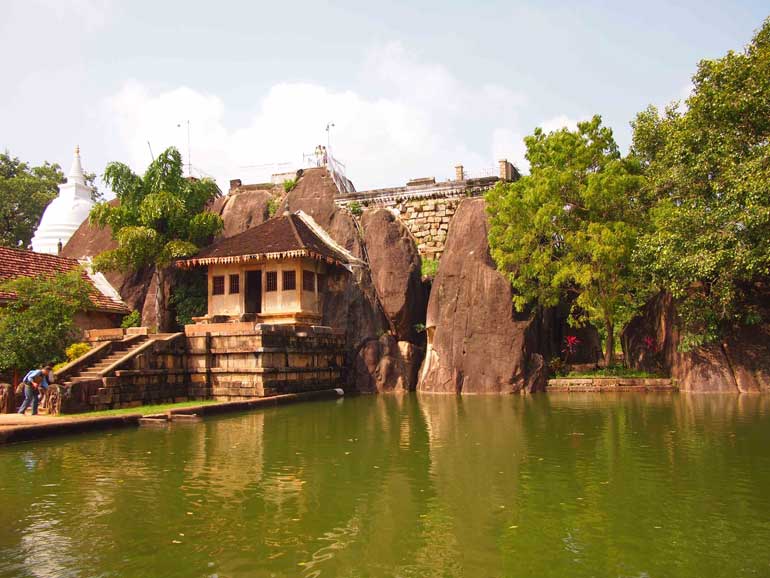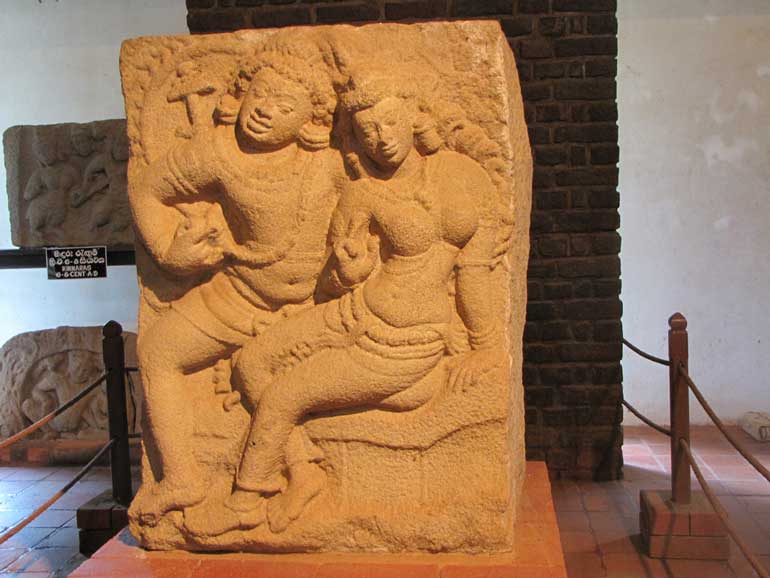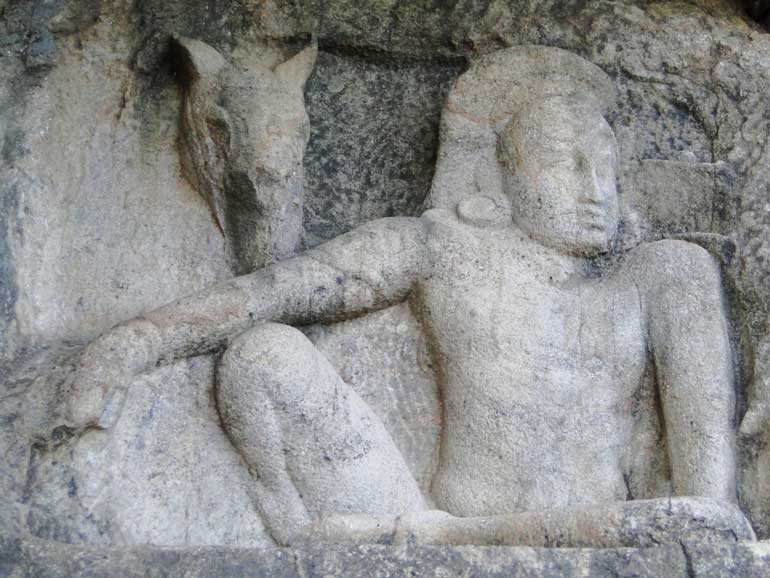Saturday Feb 01, 2025
Saturday Feb 01, 2025
Saturday, 8 August 2015 00:00 - - {{hitsCtrl.values.hits}}

Isurumuniya

Lovers

Man and horse
Apart from the ‘Atamasthana’, there is at least one other temple which is quite interesting from both the historical and artistic point of view. It is the Isurumuniya rock temple which has some unique features compared to the other places of worship.
The open paddy fields around, irrigation channels running through them, the small square pool in the foreground fed from the nearby Tissawewa, one of the three large tanks in the holy city (Nuwarawewa and Basawakkulama are the other two), and a Bo tree overhanging over the water.
Author and archaeologist John Still (‘Jungle Tide’ fame) wrote: “Of all the pretty corners of Anuradhapura, this little group of black rocks is the most picturesque.”
While the setting of Isurumuni viharaya dating back to the days of King Devanampiyatissa (3rd C BC) reflects the unspoilt rural environment, it is world famous for two pieces of sculpture – ‘The Lovers’ and ‘The Man and the Horse’. There are also rock reliefs of elephants.
Of the two sculptures, the more popular is ‘The Lovers’ whom some interpret as a representation of a Hindu god and his consort – Shiva and Parvati. Dr. Paranavitana thinks it’s Saliya, son of king Dutugemunu and Asokamala, a ‘candala’ maid whom the prince preferred to the throne. Whatever it represents, the bas relief depicts a young warrior on a stone seat with a charming damsel seated on the lap.
‘The Man and the Horse’ is a simple rock-carved figure showing a horse’s head above the shoulder of a man, who, according to some, represents Hindu saint Kapila.
Dr. Ananda Coomaraswamy describes it thus: “The sage is represented as a man of supreme dignity seated in the pose of a kingly ease, grazing outward from the cave, as if on the watch for the coming of the sons of Sagara; this outwardly directed interest reminds us that this is the figure of a man, no god, without detracting from its supreme grandeur.”
Dr. Paranavitana identifies the man with the Rain-god Parjanya and the horse as fire. He adds that the site was also the place where rain-making ceremonies were carried out.
Being in very low relief by the water’s edge, the rock-cut elephants are supposed to depict them descending to the pond for water. “The artist has been very successful in rendering the sagacious look of the beast. Rarely has the elephant been represented in art in a manner truer to nature than in this relief,” writes Dr. Paranavitana.